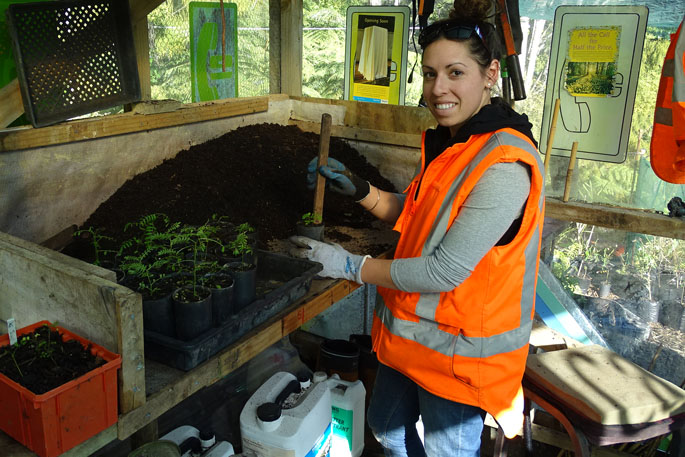Driving Creek Conservation Park won’t be hidden gem for much longer if conservation team leader Chelsea Kokshoorn has her way.
A few hundred people visited the 1.6ha predator-fenced wildlife sanctuary last year.
But with plans to increase visitor numbers, introduce guided tours and network with local schools and community groups to raise awareness about conservation, more visitors are expected at the Coromandel sanctuary in the coming year.
The sanctuary sits within 24ha of regenerated native bush and was established by renowned potter and conservationist Barry Brickell, who died a few years ago.
“Barry had a soft spot for native ecology, and we want to keep his vision alive for a place where people can come and experience a natural ecosystem,” says Chelsea.
The park features wetlands, native forest and is home to a pair of native pateke ducks, tui, bellbirds, kereru, lizards, geckos, skinks, eels and a variety of fish.
Limited information about the number of each species is available, and one of Chelsea’s jobs is to develop a more comprehensive catalogue of the sanctuary’s wildlife.
Maintaining the conservation park’s predator-free status is a team effort, and Chelsea works with volunteers and locals like the Moehau Environmental Group to maintain the park, including checking the nine traps outside the predator fencing.
Keeping debris clear of the 1.97m fence, which was erected in 2008, is important. The specially designed fence has a smooth slanted lip at the top to prevent jumping animals like possums or cats getting a grip, and the fence goes below ground to stop burrowing animals digging under it.
“Maintaining a 2m distance between the fence and nearby trees stops jumping animals making it into the sanctuary, so I walk the perimeter at least once a week looking for fallen branches or debris,” says Chelsea.
Ink tunnels are stationed around the inside of the fenced area to record the presence of predators like rats, stoats or mice. These are checked regularly by Chelsea or one of the volunteers.
Chelsea uses her horticulture background to propagate native plants in the park’s large nursery. Plants are used in the extensive native bush regeneration programme within the sanctuary and wider Driving Creek property, says Chelsea.
“Seeds are collected and seedlings saved from around the property. With 24ha of land, we have no shortage of seeds or seedlings.
“No two days are the same here, and I really enjoy the variety of the work. I only work three-days-a-week, but there is enough to keep me busy for much longer than that!”



0 Comments
Leave a Comment